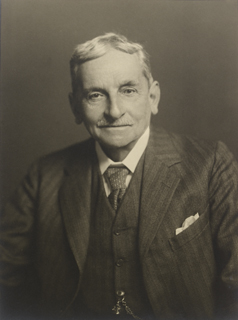Table of Contents
Arthur Evans was a British archaeologist who is best known for his excavations at the site of Knossos, located on the island of Crete in Greece. His work at Knossos revolutionized our understanding of Minoan civilization and established him as one of the foremost experts on ancient Greece.

Early Life and Studies
Born on July 8, 1851, in Nash Mills, England, Sir Arthur Evans was the first child of John Evans and Harriet Dickinson. His father, a paper manufacturer and an amateur archaeologist, sparked Arthur’s interest in archaeology from a young age.
When he was young , Evans attended several prestigious schools in England before studying at Oxford University. He then went on to work as a journalist and an antiquities dealer, acquiring valuable experience that would later assist him in his archaeological career.
Historical Context Leading to the Excavations
Evans’ interest in the Mediterranean’s ancient civilizations was sparked by discoveries of several seal stones bearing mysterious inscriptions from Crete. Intrigued, he proposed to the local Cretan Archaeological Council to buy the land and excavate the site himself, which marked the beginning of his groundbreaking work in Knossos.
Unveiling the Minoan Civilization
Evans’ excavations revealed an advanced city with elaborate architectural structures that bore testament to the incredible achievements of the Minoans. Large central courtyards, complex drainage systems, and multi-storied buildings painted a picture of a highly organized and sophisticated society.
He discovered a vast array of artifacts, including pottery, tools, and jewelry, each providing valuable insights into the Minoan culture. Intricate frescoes depicting scenes from daily life and religious rituals suggested a people deeply connected with nature and their gods.
Arthur Evans and the Mystery of Linear B
In his extensive work at Knossos, Arthur Evans uncovered thousands of clay tablets inscribed with what he termed as Linear B script. This script, markedly different from Linear A which was also found at the site, was a perplexing mystery that Evans devoted much of his later career to deciphering. The Linear B tablets, dated back to 1450-1200 BC, were primarily found in administrative centres of the Minoan civilization, suggesting their use in bureaucratic record-keeping.
Evans initially proposed that Linear B represented a form of Minoan language, distinct from the Greek language. However, this theory was later disproved. After Evans’ death, the linguist Michael Ventris successfully deciphered Linear B in 1952, revealing that it was an early form of Greek. This significant discovery dramatically reshaped the understanding of Aegean history, by confirming that Greek speakers were present in Crete during the Minoan period.
While Evans did not live to see the decipherment of Linear B, his groundwork and tenacity laid the foundation for this critical breakthrough in archaeology. His relentless pursuit of the Minoan civilization’s secrets exemplifies the impact of his work at Knossos, and continues to shape our understanding of ancient civilizations.
Controversies Surrounding Evans’ Work
While Evans’ discoveries were undoubtedly significant, they were not without controversy. His decision to reconstruct parts of the Palace of Knossos using concrete was met with criticism, with some accusing him of being overly imaginative and not entirely accurate. Despite these controversies, the value of the information unearthed about the Minoan civilization through his work is undisputed.
Impact on Understanding of the Ancient Aegean
Through Evans’ tireless work, a hitherto unknown civilization, which Evans named the Minoan civilization after the mythical King Minos, was brought to light. His discoveries provided a wealth of information about their society, culture, and technological advancements, significantly contributing to our understanding of the ancient Aegean.
The excavations at Knossos remain one of the most significant archaeological projects of the 20th century. Evans’ work laid the foundation for the study of Aegean archaeology and continues to inspire and inform archaeologists today. His life and career serve as a testament to the impact one person can have on illuminating the pages of human history.
Legacy
Sir Arthur Evans passed away on July 11, 1941, but his legacy lives on. His pioneering work in Aegean archaeology opened a new chapter in the understanding of ancient civilizations. He transformed the Ashmolean Museum during his 25-year tenure, turning it into an archaeological museum that houses many of the artifacts from his excavations.
Evans was a trailblazer in his field, and his work continues to inspire archaeologists today. His life and career serve as a testament to the impact one person can have on our understanding of human history.
Further Reading and Resources
For additional information about Arthur Evans and his groundbreaking work at Knossos, consider exploring the following resources:
- “Sir Arthur Evans British Archaeologist” – Encyclopaedia Britannica provides a comprehensive biography and overview of Evans’s career. Read more here.
- “Knossos (Archaeological Site)” – The Ancient History Encyclopedia offers an in-depth look at the archaeological site of Knossos and its significance in understanding Minoan civilization. [Explore more here](https://www.ancient.eu/Knossos/).
- “The Decipherment of Linear B” – The BBC’s overview of the deciphering of Linear B and its implications for Aegean history. Learn more here.
- For an insight into some of the controversies surrounding Arthur Evans’ work, consider reading “Minoan Questions: An Interview with Jacke Davis and Sharon Stocker” by the Archaeological Institute of America.
- If interested in visiting or learning more about the Ashmolean Museum, visit their official website.


